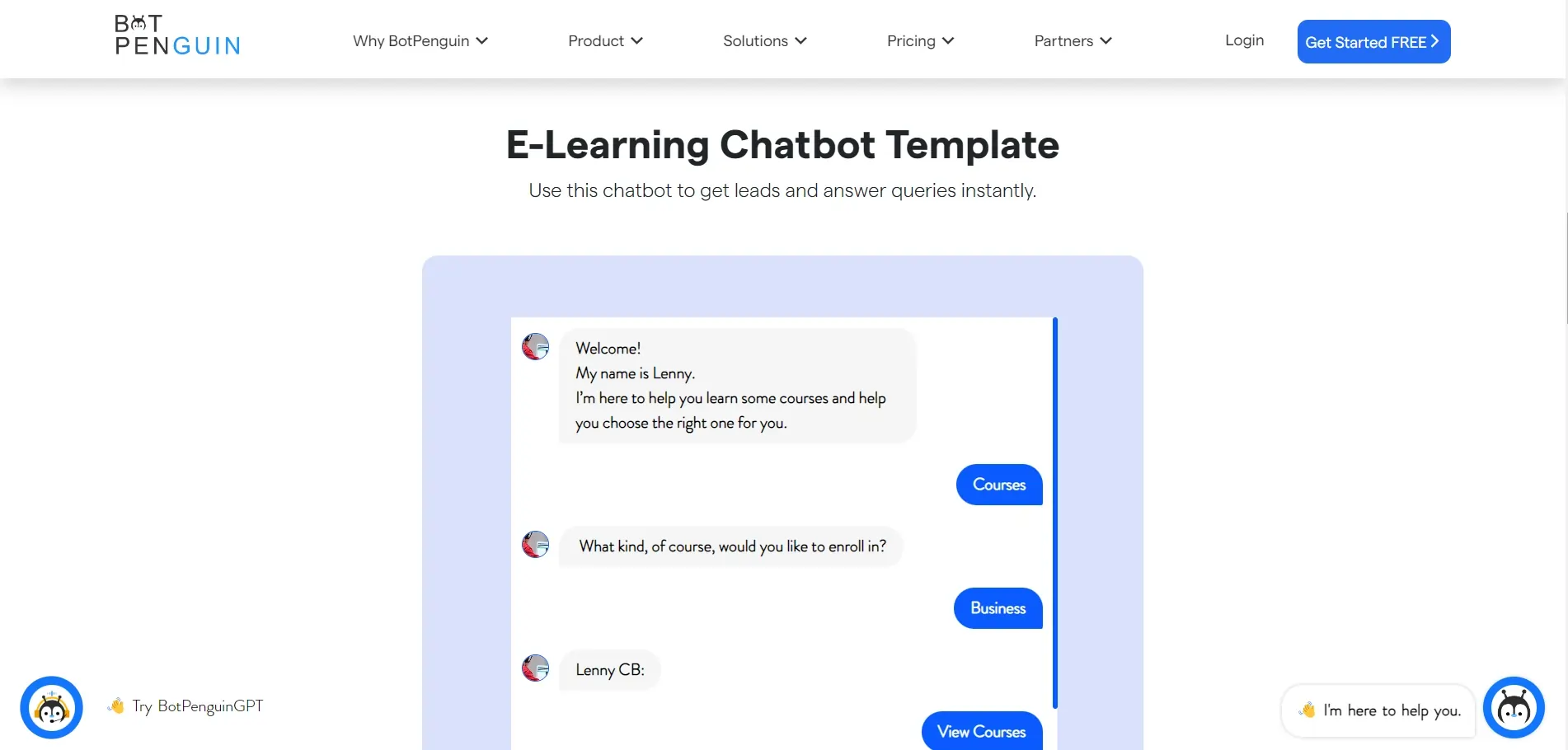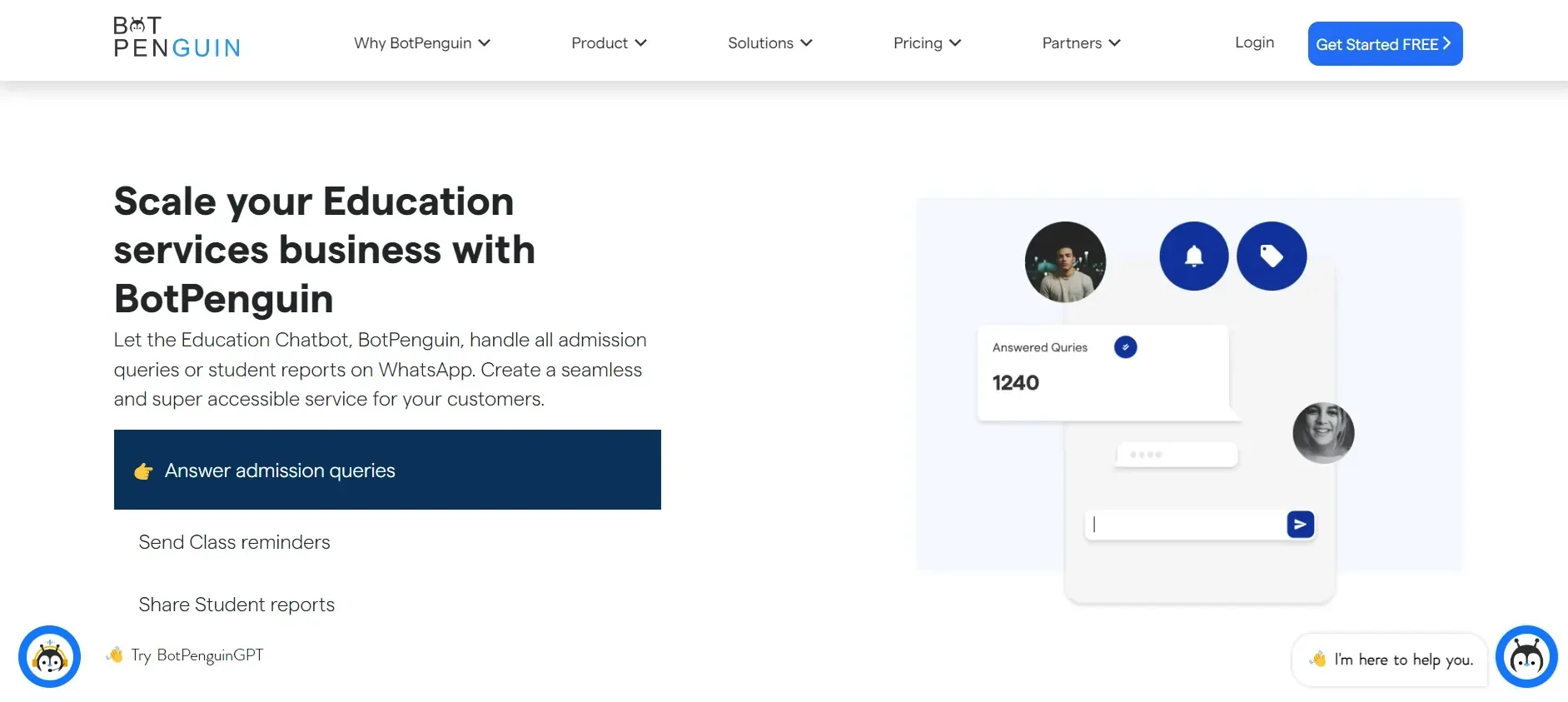Chatbots are taking over education.
These artificial intelligence-powered conversational agents are providing personalized, interactive support to empower students.
From instant 24/7 assistance to adaptive feedback, conversational AIs are transforming learning.
Curious to know more?
This blog will take you through everything you need to know about using chatbots for educational support.
We'll explore how they work, the different types available, their role and benefits in education, and steps for successful implementation.
Whether you're a student, parent, or educator, this quick read will open your eyes to the possibilities of AI in the classroom.
You'll learn practical tips to integrate these virtual tutors and maximize their impact.
So read on to unlock the future of learning, and find out how conversational AIs can help you or your students thrive!
Understanding Conversational AIs
Conversational AIs have gained significant popularity in recent years due to their ability to simulate human-like conversations.
These chatbots that AI helps use ways of understanding the language that people use to have conversations (NLP) to know what people ask and answer back in a friendly way.
Now, we will see how conversational AI works.
Here’s How Conversational AI Works
Conversational AIs are built on complex algorithms that enable them to process and analyze user input.
They follow a series of steps to provide accurate and relevant responses:

Input Analysis
The AI analyzes the user's input, breaking it into meaningful components and identifying the primary intent behind the query.
Contextual Understanding
By considering the user's previous interactions and the ongoing conversation, the AI can better understand the context and provide more contextually relevant responses.
Response Generation
Once the input has been analyzed and the context understood, the AI generates a response relevant to the user's query.
This response can be text-based, voice-based, or, in some cases, a combination of both.
Learning and Improvement
Conversational AIs can learn from their interactions. They can be continually trained using machine learning algorithms, improving their understanding and response accuracy.
Now, let us see the types of conversations AIs for educational support.
Types of Conversational AIs for Educational Support
Different types of Conversational AIs can be used to provide educational support.
Let's explore a few common ones:

Course Assistants
Course assistants are designed to support students enrolled in specific courses. They provide guidance, answer questions, and explain the course material.
These AI-powered assistants can help students grasp complex concepts, complete assignments, and prepare for exams.
Language Tutors
Language tutors are Conversational AIs who specialize in teaching languages. They talk to students to help them practice talking, listening, reading, and writing.
The language teachers can give feedback, fix how words are said, and suggest new words to learn more.
Virtual Mentors
Virtual mentors act as personal coaches, guiding students throughout their educational journey.
They offer career advice, suggest study strategies, and provide motivation and support.
These AI mentors can assist students in setting goals, tracking progress, and overcoming obstacles.
Study Group Facilitators
Study group facilitators bring students together in a virtual environment and encourage collaboration.
They facilitate discussions, assign tasks, and ensure effective group dynamics.
By simulating the experience of an actual study group, these AI facilitators promote engagement and foster a sense of community among learners.
In the next section we will cover the role of Conversational AIs in Education.
The Role of Conversational AIs in Education
Conversational AIs can revolutionize the field of education by offering personalized and interactive support to learners.
With their ability to engage in conversations like humans, these AI-driven chatbots can address individual needs, provide instant help, and encourage active learning.
Let's delve into the various ways Conversational AIs can contribute to education.

Personalized Learning Experience
One of the key advantages of Conversational AIs in education is the ability to provide personalized support to students.
These AI-powered assistants can cater to individual learning styles and paces through tailored interactions and adaptive feedback.
By adapting to the needs of each student, Conversational AIs can enhance comprehension and retention of knowledge.
Instant Assistance and Feedback
Traditionally, students may have to wait for teachers or tutors to be available for assistance.
This waiting time can hinder the learning process and lead to frustration. Conversational AIs, on the other hand, are available 24/7, providing immediate responses to student queries.
Whether it's a question about a complex mathematical problem or a doubt related to course material, students can receive instant assistance through Conversational AIs.
Engaging and Interactive Learning
Conversational AIs can transform the learning experience into a highly interactive and engaging.
Rather than passively consuming information, students can actively participate in conversations with an AI chatbot.
This interactive element fosters profound understanding, critical thinking, and problem-solving skills. It also encourages learners to ask questions, seek clarification, and explore different perspectives.
Continuous Learning Support
With Conversational AIs, learning support is wider than classroom hours. Students can continue their educational journey outside traditional learning environments.
Whether studying late at night or revising during summer vacations, learners can rely on Conversational AIs for ongoing support and guidance.
Lastly, we will see the benefits of using Conversational AIs in Education.
Benefits of Using Conversational AIs for Educational Support
Conversational AIs offer numerous benefits in the realm of educational support.
These AI-driven chatbots have the potential to transform the way students access information, interact with course content, and engage in learning.
Let's dive into the advantages of using Conversational AIs in education.

Accessibility and Convenience
Conversational AIs provide students with immediate and convenient access to educational support.
Whether studying at home, on a commute, or in a library, learners can converse with an AI chatbot to seek guidance, obtain explanations, or receive feedback.
This accessibility ensures that learners can access educational resources on their terms and at their own pace.
Personalized Assistance
Each student learns in different ways and likes different things.
Conversational AIs can adapt to these differences, providing personalized assistance and support.
These AI-driven chatbots can understand students' strengths and weaknesses through data analysis and machine learning, customize learning content, and deliver targeted feedback.
This personalized approach enhances students' overall learning experience and helps them achieve better academic outcomes.
Scalability and Cost-Efficiency
Educational institutions often need more resources and the number of qualified instructors they can provide.
Conversational AIs offer a scalable solution to this challenge. Once implemented, a single AI chatbot can support unlimited students simultaneously, drastically reducing the need for human resources.
This scalability makes educational support more accessible to a larger population without incurring significant costs.
Continuous Availability and Prompt Feedback
Conversational AIs are available round the clock, offering immediate responses and feedback to students.
Unlike human instructors who may have limited availability, Conversational AIs can be accessed whenever needed, enabling students to receive assistance, clarifications, or explanations promptly.
This continuous availability ensures students can progress in their studies without unnecessary delays.
Data-Driven Insights for Educators
Conversational AIs capture valuable student interactions, preferences, and performance data.
By analyzing this data, educators can gain insights into student learning patterns, identify knowledge gaps, and tailor instructional strategies accordingly.
These data-driven insights facilitate evidence-based decision-making and allow educators to provide targeted interventions for individual students or groups.
Now, let us see how to implement Conversational AIs in eduction.
Implementing Conversational AIs in Education
Implementing Conversational AIs in education requires careful planning and consideration.
Below are the steps that educational institutions can follow to integrate Conversational AIs into their learning environment successfully:Identify Goals and Objectives
Educational institutions should begin by identifying their goals and objectives for implementing Conversational AIs.
This could include improving student engagement, enhancing learning outcomes, providing personalized support, or addressing resource limitations.
Knowing precisely what you want to do will help with how to put the AI in place and see how well it works.

Choose the Right AI Platform or Solution
There are different AI programs and answers available that can be changed to fit the special needs of a school.
It's important to pick a program that goes with the school's goals and gives the necessary things and ways of working. Things to think about include:
- The platform's conversational capabilities
- Compatibility with existing systems
- Ease of integration
- Scalability
Design Conversational Agents
Educational institutions should work closely with AI developers and instructional designers to design conversational agents.
These agents should be built to understand the unique context and domain of education.
Careful consideration should be given to the conversational flow, natural language processing capabilities, and the ability to provide accurate and helpful responses.
Collect and Process Data
Conversational AIs generate a wealth of data through student interactions.
Educational institutions should establish protocols for collecting and processing this data while ensuring the privacy and security of student information.
The information collected can be looked at to learn more about how students learn, improve the AI system, and help teachers make decisions about teaching.
- Train and Continuously Improve the AI System
Conversational AIs should undergo extensive training to ensure accurate and contextually relevant responses.
Machine learning techniques can be used to continually improve the AI system's understanding and response generation capabilities.
Regular updates and refinements based on user feedback and data analysis are essential to enhancing the effectiveness of the AI system over time.
- Provide Adequate Support and Training
Students, teachers, and administrators should receive appropriate training and support to utilize the AI system effectively.
Clear guidelines, resources, and documentation should be provided to help learners navigate and make the most out of AI-powered educational support.
Setting up easy ways for teachers and students to give feedback about problems or challenges when using the new AI program is essential.
This helps fix issues and ensure everyone gets the help they need.
- Monitor and Evaluate the Implementation
It is essential to regularly check how the AI chatbot system is working after it is introduced.
This helps ensure it is helping students learn and work the way it should. Monitoring and evaluating the system helps improve it over time.
Gathering feedback from students, teachers, and administrators and conducting regular assessments will provide insights into the system's usability, accuracy, and overall contribution to student learning.
Based on this feedback, any necessary adjustments or improvements can then be made to the system.
By carefully following these steps, educational institutions can successfully implement Conversational AIs and realize their benefits.
Conclusion
The future is here. Conversational AIs are revolutionizing education, providing round-the-clock personalized support.
Students worldwide are achieving better outcomes through these AI-powered tutors.
The advantages are clear: increased accessibility, individualized learning, prompt feedback, and invaluable insights.
As AI capabilities grow, so will the potential to transform classrooms. It's time to embrace this technology and unlock its benefits.
Empower your students and improve their success with conversational AIs today. The opportunities are endless when artificial intelligence is applied for good. Help shape the future of learning.
BotPenguin stands out as a comprehensive and cost-effective solution.
By using BotPenguin's leading features, educators can transform learning with generative AI that engages students, adapts to their needs, and fosters academic growth.
For an affordable, feature-rich chatbot that enhances education, BotPenguin is the clear choice.
Frequently Asked Questions (FAQs)
How artificial intelligence can be used in education?
AI can be used in education for personalized learning, adaptive testing, and creating intelligent tutoring systems to cater to individual needs.
What is an example of a chatbot for education?
BotPenguin is best AI- conversational support with user friendly features for better learning.
Duolingo chatbot assists in language learning by engaging learners in conversations.
aIBM Watson Assistant helps students in career guidance by answering questions.
How to use chatbot for education?
Chatbots can be used for answering common queries, providing feedback, delivering personalized recommendations, automating repetitive administrative tasks and tracking learning progress.
How can teachers incorporate AI into their teaching practices?
Teachers can use AI to personalize learning, provide customized feedback, detect student's weaknesses and strengths.
They can also use AI chatbots for administrative tasks and to provide quick responses to student queries.


